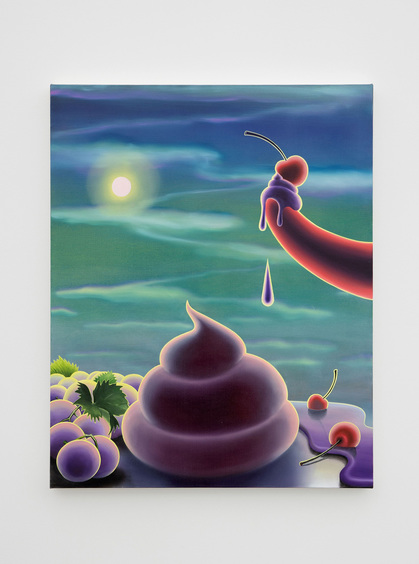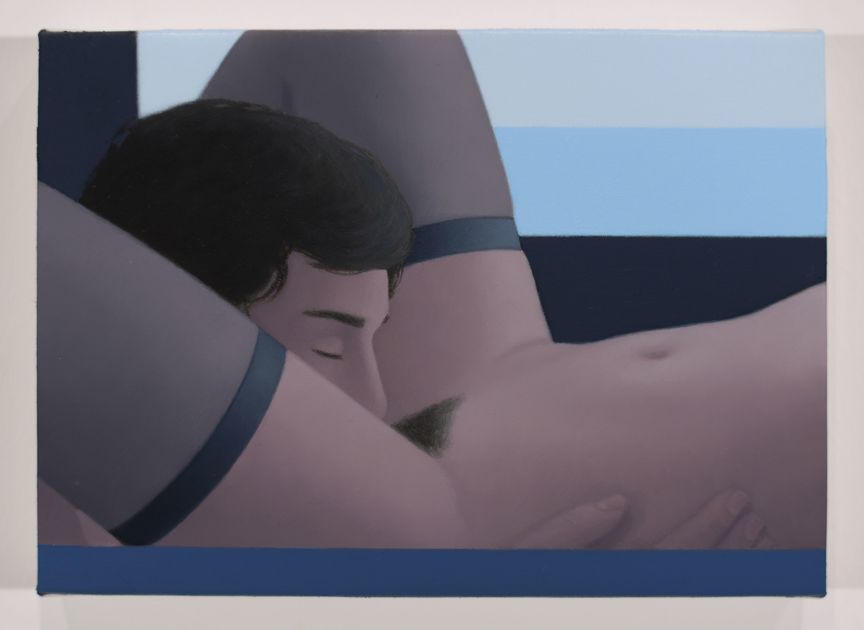-
From Current Issue
-
- Editor’s Letter Fire in the Heart
- Reviews I Gusti Ayu Kadek Murniasih
- Reviews 11th Seoul Mediacity Biennale: “One Escape at a Time”
- Dispatch Networked China
- One on One Monira Al Qadiri on Yukio Mishima
- Essays The rise of independent art spaces in pandemic-era Shanghai
- Features Tuan Andrew Nguyen
- Table of Contents
- Web Exclusives
- Archive
- Subscribe

R
E
V N
E
X
T
Installation view of “No Patience for Monuments” at Perrotin, Seoul, 2019. Photo by Youngha Jo. Courtesy Perrotin, Seoul / Hong Kong / Tokyo / Shanghai / Paris / New York.
In author Ursula K. Le Guin’s 1986 essay, “The Carrier Bag Theory of Fiction,” Le Guin cites writer and editor Elizabeth Fisher’s “carrier bag theory,” which posits that the earliest tool was in fact a vessel for gathering and not a weapon—as is favored in male-centric historical narratives—pointing to the biases ingrained in the ways that we describe and monumentalize the past. Presented at Perrotin’s Korean outpost in Seoul, “No Patience for Monuments” pivoted from Le Guin’s text, “[Uniting] artists whose works push against a patriarchal, historical narrative and begin to offer a new way forward,” in the words of Perrotin director and organizer of the group show, Valentine Blondel.
With the works of a dozen practitioners, the exhibition demanded agency around female representation, building on the feminist uprisings that have pulsed through South Korea following the global #MeToo movement. Since 2018, the nation—which has the biggest gender pay gap in the developed world—has seen the largest all-female protest in its history, with an estimated 30,000 strong railing against revenge porn, spy-cams capturing private moments without consent, and police bias with these crimes. Women have also spoken up for abortion and against unreachable beauty standards, bringing women’s rights to the forefront of societal discussions.
This new ethos was captured in “No Patience for Monuments.” Sharing its name with the exhibition, Brooklyn-based Emily Mae Smith’s oil-on-linen No Patience for Monuments II (2019) was a standout work. In the painting, a luscious peak of whipped cream casts its shadow onto a blue-sherbet horizon, while a large hyper-elasticized tongue licks the centrepiece to steal a taste, and a liquified pool of the substance forms on the side. With its soft, sweet and delicate qualities, the treat is antithetical to monuments. Delivered with technical prowess, the imaginary, sci-fi-esque scene radiates with an almost nuclear effervescence, and is at once transcendent, alien, and droll—setting the tone of the show.
With an oeuvre that focuses on the strategic creation of desire, Genesis Belanger’s porcelain assemblage Breakfast in Bed (2019) depicts a pale, unglazed ordinary morning meal of eggs and sausages with a wedding ring wedged in a dollop of mustard that mirrors the shape of Smith’s whipped peak. The strange amalgamation of a quotidian breakfast and a treasured nuptial symbol casualizes both and lumps them together as obligatory rituals. Though the breakfast is distinctly American, the sentiment is not, and, with her signature wit, Belanger interrogates our gratuitous and universal adoption of both practices.
Ridley Howard’s depiction of cunnilingus considers the corporal desires of women instead of societal projections of female sexuality. By the Ocean (2019) yokes together the stillness and detachment of American scene painting, and the surrealist, fictional spaces of second-generation Pop artists such as Ed Ruscha and Rosalyn Drexler, in a taciturn image that stylistically counters the dramatization of sex. Here, the female subject is the sole recipient of gentle sexual pleasure and her erotic desires take priority. As such, the image defies the tropes of eroticism in Western art history, as critic Linda Nochlin problematizes in her 1972 essay Eroticism and Female Imagery in Nineteenth-Century Art: “As far as one knows, there simply exists no art, and certainly no high art, in the nineteenth century based upon women’s erotic needs, wishes or fantasies.”
Seoul-born, New York-based GaHee Park’s Chateau de Plaisir (2018) depicts an equally intimate moment. A nude woman shares her post-coital cigarette with one hand and holds a dog lead with the other, while draped around her lover’s body in a quaint, domestic setting. With her dominatrix-style knee-high boots, long black nails and possession of the “lead,” the artist suggests the female protagonist’s control of the intimate encounter, overturning the conventional portrayal of women as sexually and domestically subservient.
Protesting against both the absence of women as makers in art history and a correction of their portrayal as passive subjects, the exhibition upended gender conventions with a cohesive showing of technical prowess and incisive wit, echoing the growing sentiment of its host-city.
“No Patience for Monuments” is on view at Perrotin, Seoul, until June 8, 2019.
To read more of ArtAsiaPacific’s articles, visit our Digital Library.



















